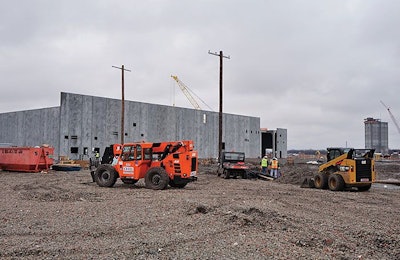
As Costco is set to be the first U.S. retailer to integrate its meat supply to the farm level, a new report from CoBank’s Knowledge Exchange Division predicts that other food retailers and foodservice companies may be prompted to reevaluate their own supply chain integration opportunities.
The full report, “Redefining Farm-to-Fork: Costco Sets New Protein Precedent” is available online.
In September 2019, a new poultry complex in eastern Nebraska is expected to open. That complex will be operated by Lincoln Premium Poultry, a new-company in which Costco is a part owner.
Costco it expects in-house production through the new complex to generate a savings of 10 to 35 cents per bird. According to the CoBank report, the move comes as Costco’s rotisserie chickens have become a major traffic-driver for in-store customers, while available supplies of whole birds at targeted weights have declined. Since 2010, Costco’s rotisserie chicken sales have grown by more than 8 percent annually — three times the growth rate of total U.S. poultry consumption — and have maintained a $4.99 per chicken price point.
Costco’s move marks the first time a U.S. retailer has integrated its meat supply to the farm level and taken on the risks associated with animal husbandry, including feeding, animal welfare, disease prevention and harvesting.
“We see the decision by Costco to bring its poultry supply in-house as a result of three primary drivers — surety of supply, visibility up the chain and cost control,” said Will Sawyer, lead animal protein economist at CoBank. “The ability to control the consistency of bird weights enhances food preparation and safety. Locating the facility in Nebraska also provides access to feed at favorable costs, a reliable water supply and a comparatively advantageous labor market.”
The Nebraska complex will be able to process 100 million birds per year with one-third of the rotisserie program being produced in-house. The facility will also process chicken parts.
If Costco’s foray into production and processing is successful, it could be the model for other food retailers and food service companies to vertically integrate in other protein sectors.
Would this model work with beef, pork processing?
However, Sawyer suggested this approach presents significant risks and challenges to other U.S meat sectors, particularly beef and pork.
“Food retailers will need to evaluate a number of risks in order to justify the investment of time and capital required to build their own production capacity,” said Sawyer. “Beef packers have historically yielded very tight margins, and with declining per capita beef consumption the sector would be unlikely to meet its return objectives. Pork processing brings the risk of very large exposure to export market risks. Additionally, retailers will need to consider food safety risks, negative profitability in production and whole animal utilization to justify such investments.”
Of the three major proteins, poultry is the most appealing for retailer integration. Opportunities for further integration in poultry will likely be focused in secondary and further processing rather than primary processing, said Sawyer.
If Costco’s chicken production is successful, it will undoubtedly prompt questions across agricultural supply chains and lead other food retailers and foodservice companies to reexamine their business models, CoBank’s report concludes.















